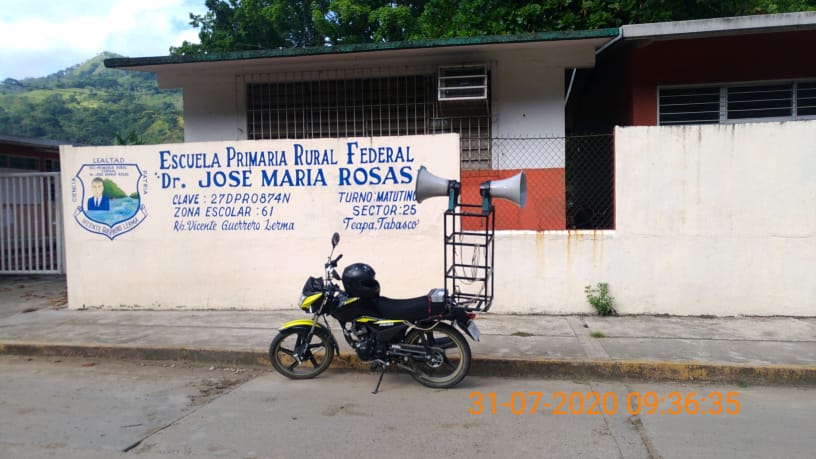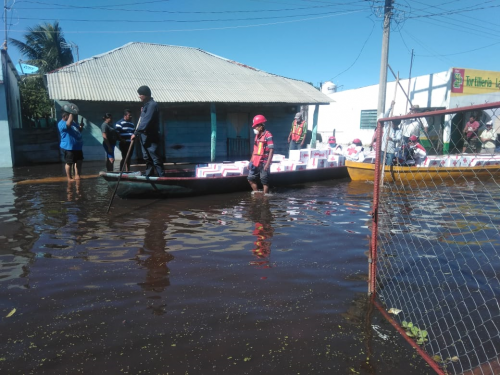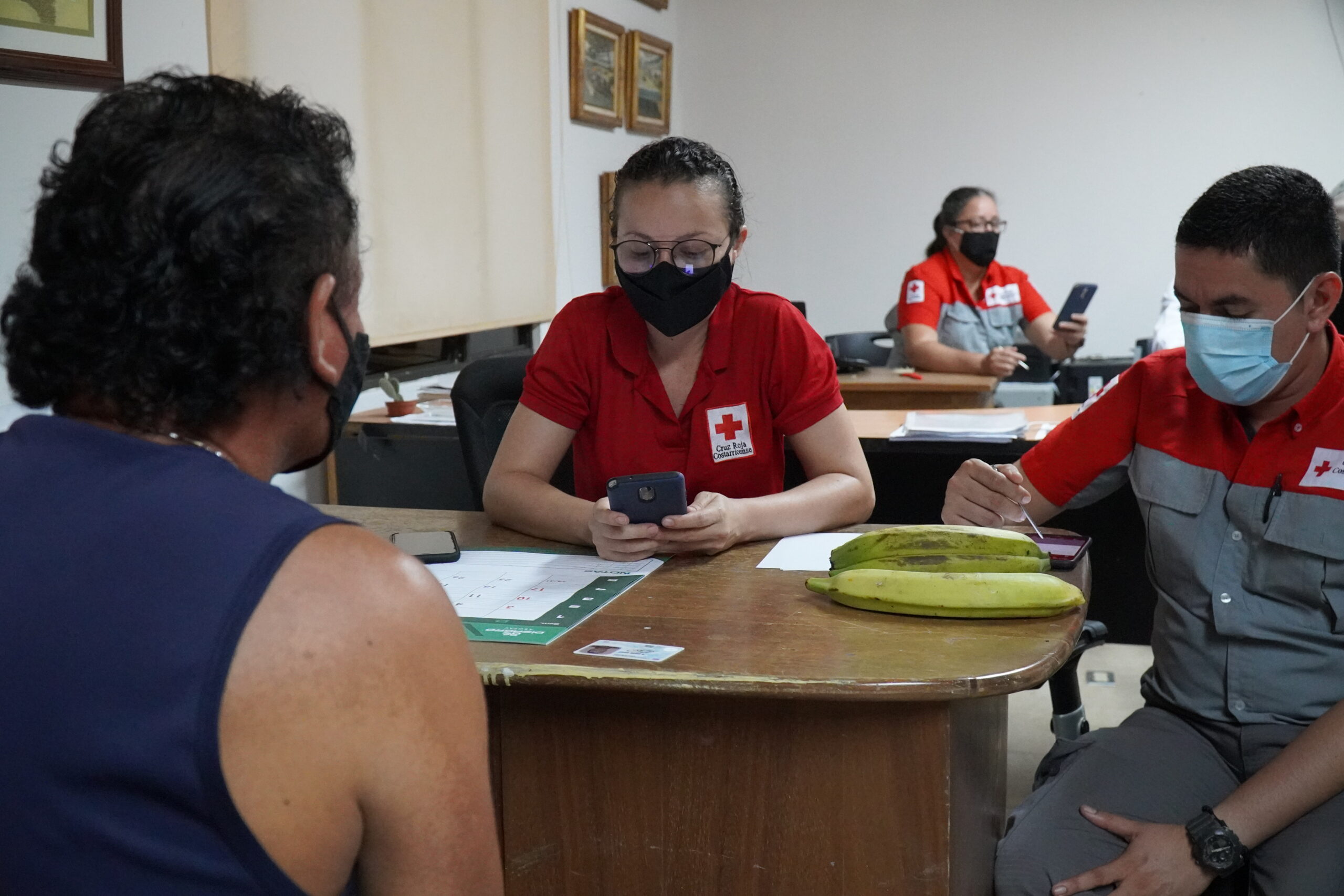Adaptability in Times of Covid-19: Exploring Digital Resilience Building

Traditional on-site and face-to-face resilience building activities are unavailable to humanitarian and development organizations due to the Coronavirus pandemic and related lockdowns. As communities across the globe still face risks in the form of Covid-19 as well as natural hazards like floods, finding practical ways to help communities strengthen their resilience is more important than ever. The flood resilience and pandemic preparedness work of the Zurich Flood Resilience Alliance (ZFRA) team in the Mexican Red Cross illustrates how the Covid-19 pandemic has accelerated use of digital methodologies and tools and the accompanying opportunities and challenges.
Use of Digital Tools and Methods Before Covid-19
Before Covid-19, the Flood Resilience team engaged in the formation of community brigades and community-based education on disaster risk reduction and management (DRR/M). These activities relied on face-to-face interaction with communities and digital tools only played a minor role in the work. The team used WhatsApp to coordinate upcoming events with community leaders. The local Red Cross branch also received hydrometeorological information from the Institute of Civil Protection through WhatsApp. Social media channels like Facebook and Twitter were only used for standard communication activities. This all changed with the start of the pandemic and lockdown as face-to-face interaction with communities has been, and still is, impossible.
Online Activities for Covid-19 Awareness Raising and Flood Resilience Building
Pushed by the circumstances, the team now increasingly relies on social media, messenger services, and communication tools to stay in touch and support communities through the crisis. For example, while awareness raising and health promotion would traditionally be conducted in face-to-face sessions, the team now shares infographics, podcasts, and videos on WhatsApp, Facebook, and Twitter. Being responsive to communities’ acute needs at the beginning of the pandemic, the team promoted Covid-19 safety measures at home and outside and raised awareness about the differences between Covid-19 and dengue symptoms.
This experience is now used to share key messages on issues other than Covid-19 and to continue the ZFRA programme’s
flood resilience work.  For example, the team prepared, and shared infographics explaining how to prepare and respond to tropical storm Cristobal. Moreover, the team have continued to establish community brigades by creating and sharing videos with instructions on how to organize them and how to prepare for emergency situations.
For example, the team prepared, and shared infographics explaining how to prepare and respond to tropical storm Cristobal. Moreover, the team have continued to establish community brigades by creating and sharing videos with instructions on how to organize them and how to prepare for emergency situations.
Beyond the messages and information shared with communities, the team’s virtual community work supports and empowers communities to organize themselves. Facilitating social organization and cohesion is more important than ever as lockdowns and physical distancing can lead to social distancing and erosion of social capital. As Brenda Avila Flores, ZFRA Country Programme Manager, puts it: “For us it is very important to strengthen the linkages with and in communities. No matter whether we are talking about Covid-19, floods or storms, we need to keep in touch with them to know how the communities are organizing themselves and to support them.”
Working Through Multipliers for Increased Reach
To achieve wide dissemination, the team works closely with key actors such as local leaders, authorities, schoolteachers, and directors, who act as multipliers. For example, videos and infographics are shared with teachers and directors, who then share them with colleagues, students, and parents. This way, the team can effectively tap into existing communication channels. Feedback from teachers indicate that students particularly liked the animated videos on Covid-19 safety measures.
Podcasts promoting Covid-19 safety measures are shared with local leaders and authorities, who play them on loudspeakers in the communities. Materials are also shared in WhatsApp groups of community brigade members who were recruited before the pandemic. Thereby, the team managed to stay in close touch and support four communities with about 2,000 inhabitants in Teapa and 18 communities with about 6,700 inhabitants in Jonuta.

Weekly follow-up calls with community leaders are used as feedback channels and to monitor the situation on the ground. As Gabriel Reyes, ZFRA Field Coordinator, explains, “remaining in regular contact with the communities also enables them to ask for specific information and the team to create the materials that the people ask for”. Close two-way communication allows the team to stay community-centred and demand driven.
Challenges of Virtual and Remote Community Work
Of course, this new way of working does not come without challenges. Internet access might be limited in remote areas, due to digital illiteracy, and/or the costs of (smart)phones and mobile data. Activities might therefore not reach all community members and particularly poor and remote households risk being excluded. The team is aware of this and explores ways to address these barriers. For example, videos are shared in the smallest possible size to reduce data traffic. However, the extent of the problem is not clear as the team has currently only incomplete information about the communities’ use of phones, social media, and messenger services, which they expected to be very different to experiences in cities.
Another problem is the team’s reliance on other stakeholders and networks, which render content control and impact assessment difficult. For example, the team trusts that its contacts share information and materials with the rest of the community. However, ZFRA staff and volunteers are aware of the risk that information might be misused for propaganda and political purposes. This is particularly challenging in fragile contexts with political conflicts. Moreover, as rigorous monitoring and evaluation is not possible due to the lockdown, the team is limited to anecdotal evidence about the impact of the activities. This evidence most often comes from the key contacts and stakeholders.
What we’ve learnt and how we’ll use it 
Digital technologies, and social media particularly, can be powerful tools for DRR and resilience programmes when onsite and face-to-face activities cannot be carried out. The example from Mexico shows how internet access, social media and messenger services open new opportunities to reach and work even with remote and inaccessible communities. Exploring and using these opportunities has accelerated with Covid-19.
We have observed with the Coronavirus and related lockdowns across countries how practitioners are no longer using social media as solely a tool for communication but as delivery mechanisms for core work concerning areas of risk awareness, training and development workshops, and facilitating two-way dialogues with critical stakeholders. Importantly, as we move forward considering ‘the new normal’ as well as potential second waves, we need to anticipate a strategy for hybrid programming and service delivery. As Gabriel Reyes says: “As a field coordinator, I think that we need to combine virtual and presence activities because we expect the current situation to continue for a while. We are exploring ways to improve our virtual communication and activities.”
The Covid-19 crisis can be a time of major reforms in DRR and resilience programming which will accelerate the process of digitalization in an unprecedented way. The reforms sparked by Covid-19 and the capacities organizations develop now will shape DRR and resilience programming in the ‘new normal’ of the post Covid-19 world.
The potential benefits of this transformation are clear. Digital methods and tools enable organizations to work with communities even when access is not possible due to a lockdown, remoteness, insecurity, or impassable access routes due to flooding. Moreover, using digital methods and tools opens unprecedented opportunities for efficient scaling of DRR and resilience service delivery and access to a broader audience. Yet, challenges such as exclusion of vulnerable groups without internet access are serious and need to be addressed.
This blog was written by Jonathan Ulrich, Francisco Ianni and Jimena Cueva and originally published on the Flood Resilience Portal of the Zurich Flood Resilience Alliance in August 2020. Please find the original blog here. To learn more about how the flood resilience team of the Mexican Red Cross supports communities remotely using digital tool, check out this case study. To learn more about the flood resilience work of the Mexican Red Cross in general, check out this country brief.



